Chinese artist Chao Hsiu-huan (趙秀煥) paints more than 12 hours a day when she’s not teaching in Beijing or Taipei. Though her paintings depict beautiful blossoming flowers and serene landscapes, they are the product of intense feelings of loneliness and despair. Mirrored Transience (侘寂花鏡) is an apt title for her solo exhibition at Caves Art Center. Her paintings — simple and alluring as they seem — are a reflection of thoughts so complex they cannot be verbalized. The feeling that nothing in nature or life lasts forever also permeates her paintings. Her color palette shifts from cool, pastel tones of daytime to dark, celestial hues of night, muddling the viewer’s perception of time and instilling in them a greater appreciation for life.
■ Caves Art Center (敦煌藝術中心), 91, Fujin St, Taipei City (台北市富錦街91號), tel: (02) 2718-2091. Open daily from 11am to 7pm
■ Until May 28
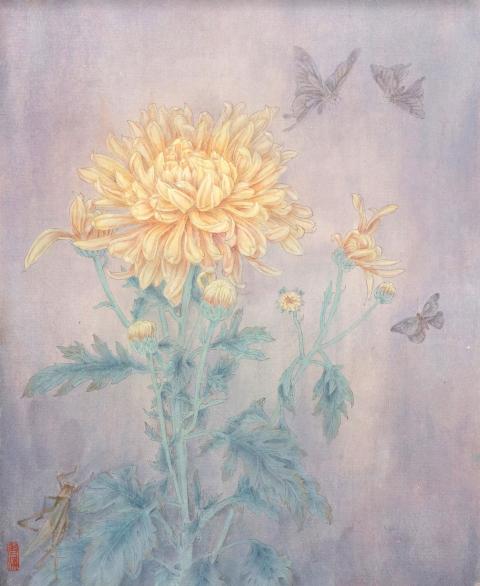
Photo courtesy of caves
Lin & Lin Gallery’s latest exhibition, Borders and Beyond (溢界 × 邊線), explores the idea and evolution of Taiwanese identity through the various viewpoints of several artists. Chen Ching-yuan (陳敬元), who is known for his “activist art” during the Sunflower Movement, suggests through his paintings of monster attacks and ample use of motifs such as bullseye and weapons, that humans are prone to conflict and destruction. Hsieh Mu-chi (謝牧岐) is known as much for his flamboyant dress sense as he is for his anti-Chinese National Party (KMT) activism. Hsieh’s latest work explores the concept of deception. From afar, his paintings look like lush, tropical scenes; up close there are elements that are grim and out of place. Comic book artist and toy designer Lai Chiu-chen (賴九岑) takes a pop culture approach with his signature goofy, globular-shaped cartoons, suggesting that soft power can influence people’s thinking as much as hard power.
■ Lin & Lin Gallery (大未來林舍畫廊), 16, Dongfeng St, Taipei City (台北市東豐街16號), tel: (02) 2700-6866. Open Tuesdays to Sundays from 11am to 7pm
■ Until June 11
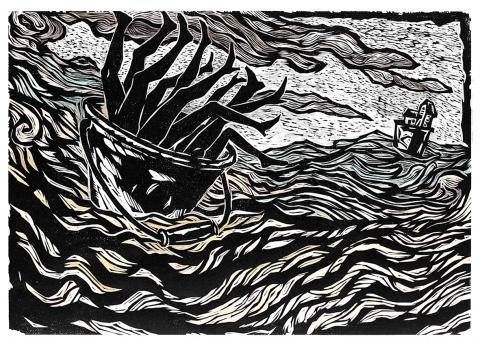
Photo courtesy of MBMore
Husband and wife duo, Pan Chin-jui (潘勁瑞) and Lay May-hui (賴美惠), explore the simple pleasures of island life in their latest exhibition, Diary of the Island (島嶼.日記), at printmaking shop MBMore. While both artists critique urban development, especially the negative effect it has on the environment, Pan’s black-and-white letterpress exudes an ominous feel, while Lay’s colorful etchings of fruit are more hopeful and suggest the promise of a better future. Both artists skillfully convey the notion that although Taiwan is a beautiful country, its inhabitants seem to have lost touch with nature.
■ MBMore (岩筆模), 275, Nanjing W Rd, Taipei City (台北市南京西路275號), tel: (02) 2558-3395. Open Tuesday to Sundays from 11am to 7pm
■ Until June 11
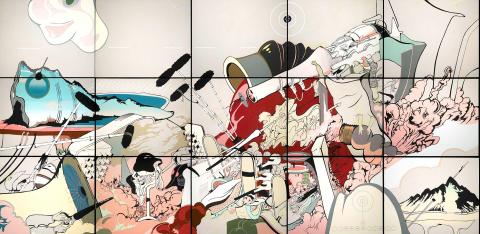
Photo courtesy of Lin & Lin Gallery
Even if you’re a staunch non-believer of the supernatural, Linda Connor’s haunting black-and-white photographs may have you questioning your beliefs. A sampling of the American photographer’s work taken from around the world over many decades are on display at Kuandu Museum of Fine Arts. Many Years: The Photography of Linda Connor (很多年:琳達・康納攝影展) looks at the importance that different cultures attach to spirituality and ghosts. Connor photographs sacred and historic sites from Thailand to Peru, documenting religious rites and rituals, as well as everyday life. Even if these places aren’t haunted, her photographs look like they are from a different era, exuding an eerie but also awe-inspiring feeling of time standing still.
■ Kuandu Museum of Fine Arts (關渡美術館), 1 Xueyuan Rd, Taipei City (台北市學園路1號), tel: (02) 2896-1000 X 2432. Open Tuesdays to Sundays from 10am to 5pm
■ Until June 18
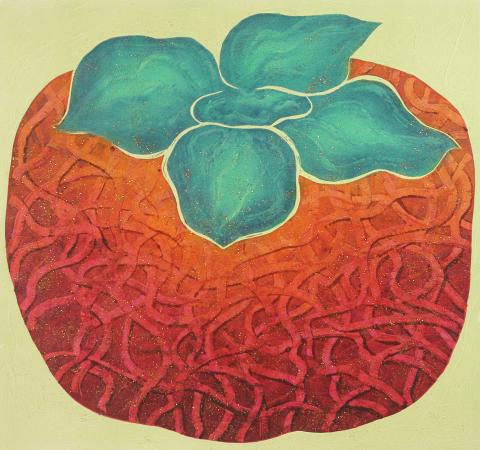
Photo courtesy of MBMore
It’s a busy week for TKG+ Projects with two new exhibitions. 91 Square Meters of Time (時間91平方米) by Wu Chi-yu (吳其育) examines the concepts of time and memory in relation to Taiwanese history and politics. His video installations make use of oral history, which to him is a process of unearthing lost memories. Wu also incorporates into his art stories from Orchid Island’s Aborigines, who have had a very troubled history.
Also on display at TKG+ Projects is Backseat Boulevard (後座大道) by Jao Chia-en (饒加恩). Another exhibition dealing with Taiwanese history and politics, it’s composed of three of Jao’s works that address the intersection of history and memory, in particular how personal memories of historical events conflict with the official state version. The title is derived from a passenger’s perspective from the back seat of a cab. As Jao describes: “You can see the direction, you know where you’re headed but you have no control over how you get there.” This fatalistic attitude is translated into Jao’s video installations and watercolor paintings.
■ TKG+ Projects, B1, 15, Ln 548, Ruiguang Rd, Taipei City (台北市瑞光路548巷15號B1), tel: (02) 2659-0798. Open Tuesdays to Sundays from 11am to 7pm
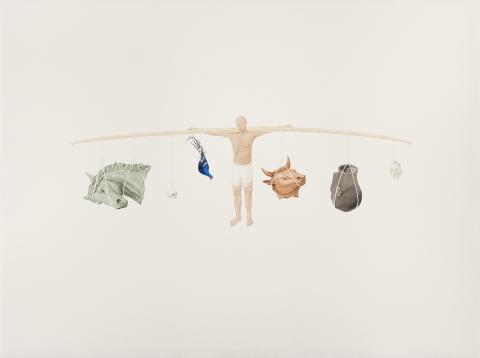
Photo courtesy of TKG+
■ Until June 25
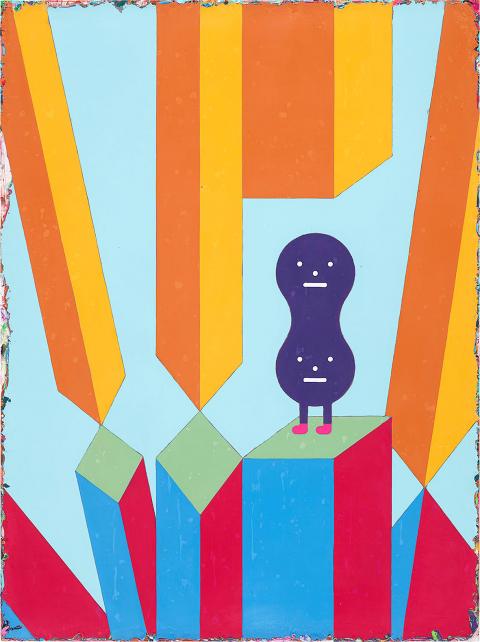
Photo courtesy of Lin & Lin Gallery

June 9 to June 15 A photo of two men riding trendy high-wheel Penny-Farthing bicycles past a Qing Dynasty gate aptly captures the essence of Taipei in 1897 — a newly colonized city on the cusp of great change. The Japanese began making significant modifications to the cityscape in 1899, tearing down Qing-era structures, widening boulevards and installing Western-style infrastructure and buildings. The photographer, Minosuke Imamura, only spent a year in Taiwan as a cartographer for the governor-general’s office, but he left behind a treasure trove of 130 images showing life at the onset of Japanese rule, spanning July 1897 to

In an interview posted online by United Daily News (UDN) on May 26, current Chinese Nationalist Party (KMT) Chairman Eric Chu (朱立倫) was asked about Taichung Mayor Lu Shiow-yen (盧秀燕) replacing him as party chair. Though not yet officially running, by the customs of Taiwan politics, Lu has been signalling she is both running for party chair and to be the party’s 2028 presidential candidate. She told an international media outlet that she was considering a run. She also gave a speech in Keelung on national priorities and foreign affairs. For details, see the May 23 edition of this column,

At Computex 2025, Nvidia CEO Jensen Huang (黃仁勳) urged the government to subsidize AI. “All schools in Taiwan must integrate AI into their curricula,” he declared. A few months earlier, he said, “If I were a student today, I’d immediately start using tools like ChatGPT, Gemini Pro and Grok to learn, write and accelerate my thinking.” Huang sees the AI-bullet train leaving the station. And as one of its drivers, he’s worried about youth not getting on board — bad for their careers, and bad for his workforce. As a semiconductor supply-chain powerhouse and AI hub wannabe, Taiwan is seeing

Jade Mountain (玉山) — Taiwan’s highest peak — is the ultimate goal for those attempting a through-hike of the Mountains to Sea National Greenway (山海圳國家綠道), and that’s precisely where we’re headed in this final installment of a quartet of articles covering the Greenway. Picking up the trail at the Tsou tribal villages of Dabang and Tefuye, it’s worth stocking up on provisions before setting off, since — aside from the scant offerings available on the mountain’s Dongpu Lodge (東埔山莊) and Paiyun Lodge’s (排雲山莊) meal service — there’s nowhere to get food from here on out. TEFUYE HISTORIC TRAIL The journey recommences with